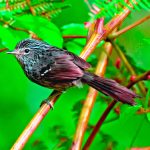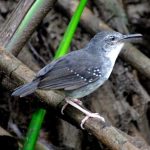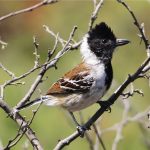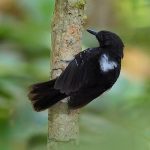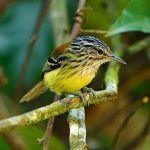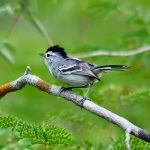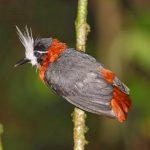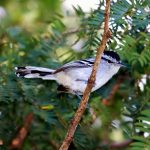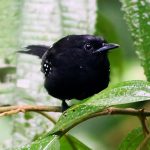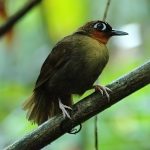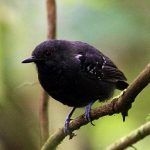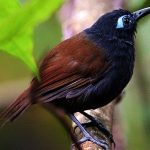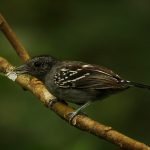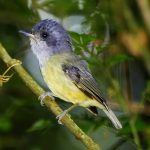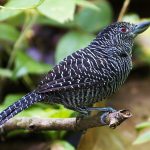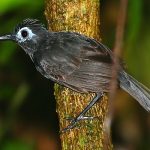Restinga antwren
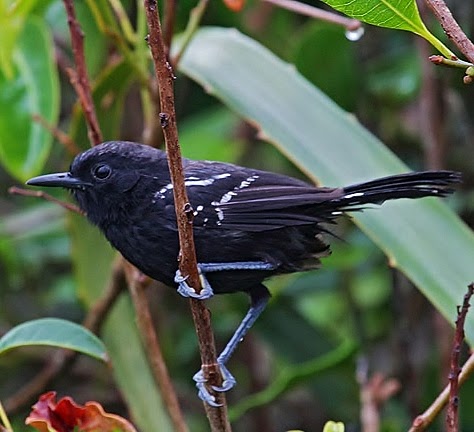
 |
| Photo by Nick Athanas (Antpitta) |
Common name:
restinga antwren (en); formigueiro-do-litoral (pt); grisin de la restinga (fr); hotmiguerito litoral (es); restingaameisenfänger (de)
Taxonomy:
Order Passeriformes
Family Thamnophilidae
Range:
This species is endemic to Rio de Janeiro state, in south-eastern Brazil, being restricted to the area around Cabo Frio including adjacent offshore islands.
Size:
These birds are 12,5-14 cm long and weigh 15 g.
Habitat:
The restinga antwren is mostly found in what is known as restinga, a beach-scrub habitat, rich in cacti and bromeliads, growing on sand-dunes. They also use other scrublands in coastal hillsides.
Diet:
They feed on various insects, such as butterflies, caterpillars, grasshoppers and beetles, as well as fruits.
Breeding:
Restinga antwrens can breed all year round. The nest is an open cup made of fine plant fibres, placed in an horizontal branch of a scrub of small tree, up to 3 m above the ground. The female lays 1-3 white eggs with brown spots, which are incubated by both parents. There is no information regarding the length of the incubation and fledgling periods, but both parents participate in rearing the chicks.
Conservation:
IUCN status – EN (Endangered)
This species has a small breeding range and a global population estimated at 1.000-2.500 individuals. The population is suspected to be declining rapidly owing to the considerable threats from beach front development, the salt industry and squatters within its restricted coastal habitat. Conservation actions underway include the designation if three protected areas and awareness campaigns directed at local teachers and school children.
